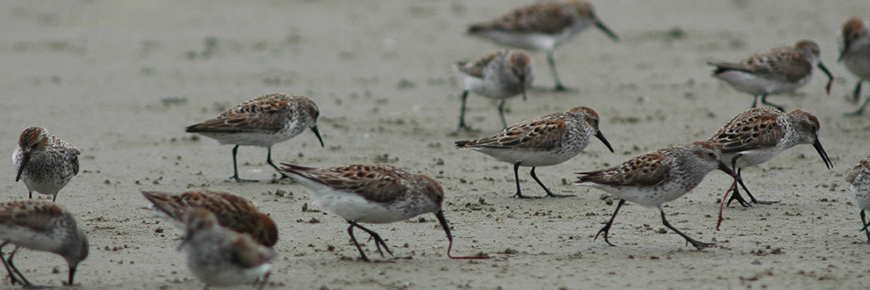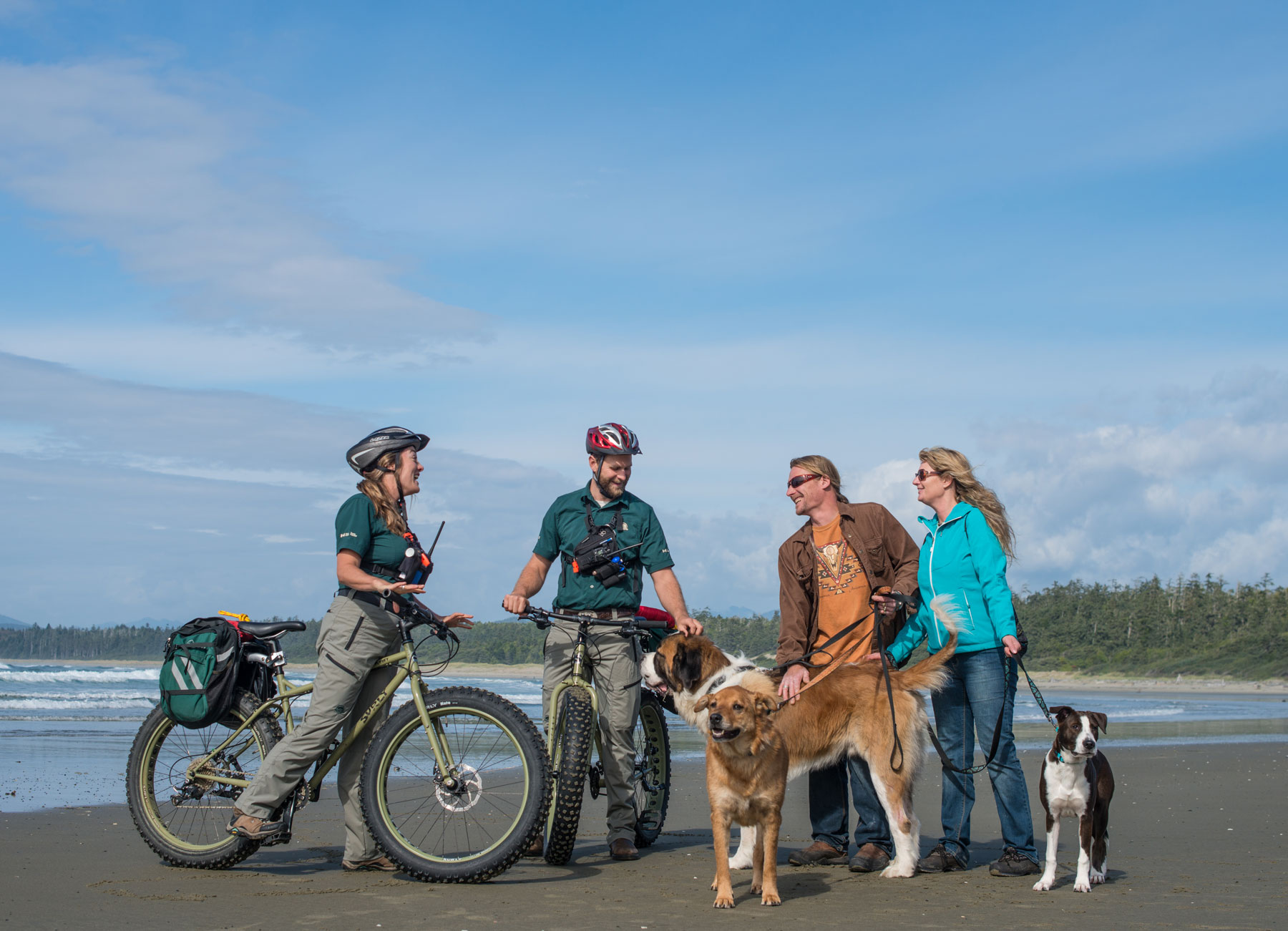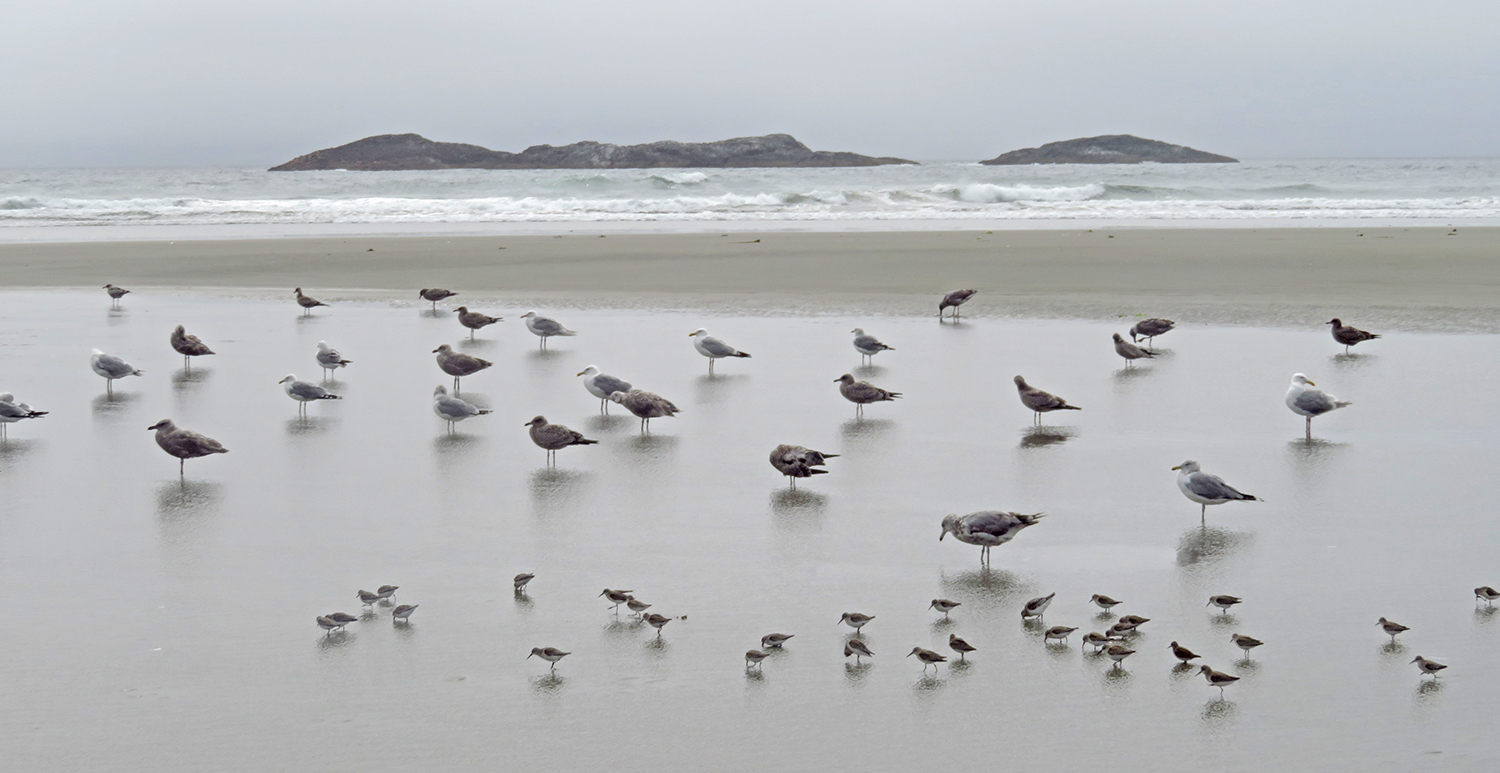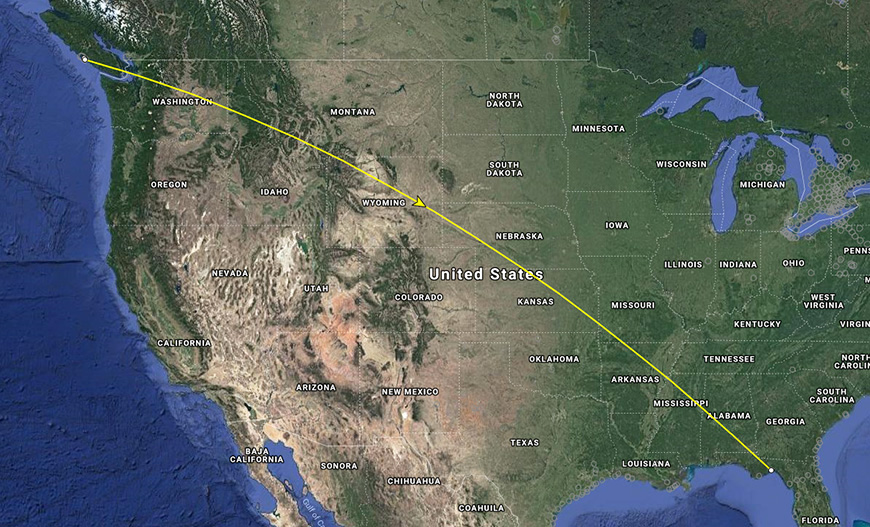
Migratory shorebirds
Pacific Rim National Park Reserve
Stressors | Monitoring | Findings
Overview
Migratory shorebirds use the Pacific coast as a flyway between their breeding grounds in Canada, the United States, and the Russian Arctic, and their wintering grounds in South, Central and southern North America. They migrate north in the spring, and back down south in the fall after breeding season. These birds are critically dependent on the beaches in and around Pacific Rim National Park Reserve to rest and replenish their energy stores.
Their timelines and energy reserves leave little room for unexpected setbacks. Delays in their journey and stressors such as human disturbance can compromise their survival and breeding success. This can lead to a long-term drop in their population numbers.
Pacific Rim National Park Reserve’s 20 kilometres of ocean beaches and in-land mudflats make great stopover locations for migratory shorebirds because these areas are home to the small insects, invertebrates, bloodworms and biofilm that make up a shorebird’s diet.
Stressors
Human disturbance
Volumes of research conducted to date demonstrate that sandy beaches, which are a primary habitat and foraging area for shorebird species, are a common place where human-wildlife conflict occurs.
Humans disturb critical shorebird activities, like foraging for food, by participating in fast-paced recreational activities, like running and cycling, and unlawful activities, such as letting dogs and pets roam the beaches off leash. When flushed by people or dogs, shorebirds are forced to expend extra energy to avoid potential predators. This stress interferes with their ability to refuel before continuing their migration.

Did you know?
Dogs are permitted in the Long Beach area of Pacific Rim National Park Reserve, with the exception of Combers Beach from April 14 to October 1. In areas where dogs are permitted, they must be on leash at all times. This includes beaches, trails, parking lots and in the water.
How is Parks Canada monitoring shorebird populations?
The effect of human disturbance on migrant birds is a conservation issue of international importance as it can lead to population declines. Disruptions can occur during migration, wintering, breeding and foraging. To better understand how visitor use of beaches in Pacific Rim National Park Reserve impacts shorebirds, Parks Canada has been monitoring migratory shorebird habitat use. Researchers look at a 100m stretch of sandy beach during one hour of the day, tracking the total number of birds spotted. By monitoring the six key shorebird species present during spring and fall, we can better understand population trends.

-
Six key shorebird species present during spring and fall:
- Dunlin
- Least Sandpiper
- Sanderling
- Semipalmated Plover
- Western Sandpiper
- Whimbrel
Radio-telemetry project
Collaborators
- Environment and Climate Change Canada - Canadian Wildlife Service
- Rainforest Education Society
Findings
Data from these receivers was downloaded in October of 2018. The number of detections per bird varied widely from 31 to 44,835. The tagged birds were primarily detected by the receiver at the Kwisitis Visitor Centre
Residence time
Birds stayed at the study area on average 5.1 days, with a minimum of one bird that was detected for 3.6 min to a maximum where the bird remained at the site for 13.1 days. Western Sandpipers stayed an average of 1.6 days, whereas Semipalmated Plovers remained an average of 6.8 days. Sanderlings remained an average of 11.3 days.
Long distance migrations

Most birds were only detected at the three sites in the Pacific Rim region (Kwistis Visitor Centre, Dinner Island, Wikaninnish Inn) however two birds that were tagged at Long Beach were detected elsewhere on the Motus Network. One Western Sandpiper tagged on August 24, 2018 was detected again in Florida on September 19th, 2018. The other bird - a Sanderling - tagged on September 6th, 2018, remained near Tofino for 13 days and then was detected again in Texas on Oct 1st and 2nd, 2018.
Related links
- Date modified :